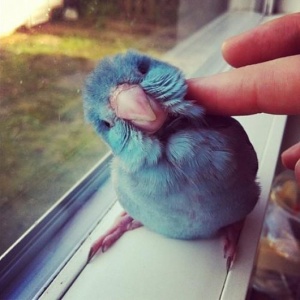7 Steps to Prevent Common Parrot Behavior Problems

Prevention is the best medicine, for both medical and behavioral problems. Identifying problems early allows you to respond appropriately the first time an undesired behavior occurs. This will prevent the likelihood of it happening again. These parrot behaviors are not mutually exclusive, and many can be addressed once you know some basic principles.
Most aggression arises from some sense of fear. A common form is biting, but it can also be seen through lunging and territorial displays in and around the cage. Observing the bird when you are not directly interacting with them will allow you to learn how to read their body language. To reduce aggression, reward your bird for being calm. Using positive reinforcement (adding something they like) will help you gain trust with your bird. When your parrot is given a choice to participate, and is not coerced into a situation, they will quickly learn the behaviors that get ignored and the ones that get rewarded.
Screaming might be the most aggravating behavior a pet parrot can display. If you are not going to be directly in the same room as the bird, it is a good idea to randomly go to the room and reward them when they are quiet. It is best to ignore the undesired behavior (any irritating attention seeking behavior) and reward the behavior you want to experience (quiet in cage or on the stand playing with toys). Yelling back at the bird will only teach the bird that by screaming you will scream back. Having the bird whistle or mimic human speech for attention would be a great alternative to screaming.
Most cage bound birds became this way through limited human interaction. To prevent your bird from staying inside his cage you need to make sure every human interaction is going to be a positive one. When you first bring your pet home you may want to cuddle with it and play. Some birds may require some time to get use to their new surroundings. Let the bird come out of their cage on their own terms. When you are around, pair your presence with things that the bird will like such as treats, toys and eventually head scratches.
Chewing can become a very expensive problem quickly. Correct bad behaviors by providing positive alternatives (a wooden toy for a slipper, foot toy for a pen). Wild parrots use their beak to explore their environment. This provides them mental stimulation as well as trims their beak. The best way to address this behavior before it becomes a problem is with proper guidance and attention. Discourage chewing on house woodwork by removing the bird from the situation and provide suitable chewing toys at beak’s length.
Even though parrots may have a tendency to choose one person as their preferred companion, positive reinforcement training can teach them it is fun to interact with other people as well. One way to prevent this problem it to teach your bird to do simple behaviors that require no direct contact. Other household members or friends visiting can then cue your bird to do these simple behaviors (wave, whistle, dance) and offer a treat. This helps associate a new person with a treat and will get your bird to look forward to visitors.
Sexual behavior can be seen as quivering, rapid head bobbing or regurgitation. It can lead to separation anxiety or aggression towards other members of the household. Instead of allowing the bird to continue a courtship behavior, the person should leave the area until the behavior stops or redirect the bird into doing an acceptable behavior (waving, retrieving, speaking etc). The person also might want to consider spending less time with the bird as other members of the house interact with the bird. This will help prevent a ‘one person’ bird. Only scratching the head of a bird and keeping it out of small dark areas (sleeping huts, hoodies, long sleeve t -shirts) can also reduce these unwanted behaviors.
Stereotypic behaviors are repetitive behaviors that appear to serve no apparent purpose. Some examples are when a bird walks back and forth on the same perch for an extended amount of time or weaving their bodies in a figure 8 along the side of the cage. By incorporating behaviors they would need to do in the wild you can reduce or prevent these abnormal behaviors. One way is by increasing your birds foraging behavior by spreading its food throughout its cage or play stand and by hiding some of the food in toys or boxes. Rearranging their cage furniture every couple of days will also help avoid stereotypic behavior. Adding and taking away toys every couple of days and rearranging perches can also help.
Visit Critter Companions to learn more.



